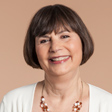Women Blazing a Trail in Finance
What drew these women into the financial field, and what lessons can they share with young women?

A few summers ago, I accompanied a group of teenage girls on a field trip to a brokerage firm, where they were scheduled to learn about investing. The session covered the usual ground of explaining stocks, bonds and mutual funds. But what made it stand out was that all the sessions were taught by female financial advisers. And what most interested the girls was how the women had begun their careers.
One woman, for example, had majored in speech communications in college and learned how to work with people by selling sneakers. When her mother bought shares of stock in a utility company for her, she was hooked. “I left lights on in the house to make money for my company,” she said, and she eventually joined a broker training program.
I think of this episode whenever female executives in the financial services industry visit us at Kiplinger. They come to talk about their businesses, but, like those teenage girls, I’m curious about how they achieved their positions—and what lessons they can share with young women.
From just $107.88 $24.99 for Kiplinger Personal Finance
Become a smarter, better informed investor. Subscribe from just $107.88 $24.99, plus get up to 4 Special Issues

Sign up for Kiplinger’s Free Newsletters
Profit and prosper with the best of expert advice on investing, taxes, retirement, personal finance and more - straight to your e-mail.
Profit and prosper with the best of expert advice - straight to your e-mail.
One recent visitor to our offices was Terri Kallsen, executive vice president for investor services at Charles Schwab. It’s Kallsen’s job to oversee Schwab’s network of more than 300 retail branch offices, as well as its wealth-management and financial-planning services. On Kallsen’s agenda, among other things, was to highlight investing costs as a matter of importance for investors—particularly women. Schwab, says Kallsen, has a policy of refunding the previous quarter’s fee if a customer is dissatisfied, to “take the risk out of paying fees.” But I was also intrigued when she said that one of her personal goals is to recruit more women to the financial field—in particular, to become certified financial planners.
Seeking women. For the past decade, the percentage of women CFPs has remained flat at about 23%. That has prompted the Certified Financial Planner Board of Standards to undertake a full-court press to attract more women—not just because it’s politically correct but because it’s potentially more profitable. “Studies have shown that when for-profit companies have women in management roles, those companies do better financially,” says Marilyn Mohrman-Gillis, executive director of the CFP Board’s Center for Financial Planning. But first you have to make young women aware that this career path exists, and that they can be successful.
Enter Terri Kallsen. She was a math-and-science major in college and started her career doing research for 3M. But it was the “people part,” and not the numbers, that drew her to financial services. “I’ve been to my clients’ weddings, funerals and family celebrations,” she says. “You can have a major impact on people’s lives.” She mentors a number of young women, one of whom was a history major who served in the Peace Corps and later became a CFP.
For Kallsen, counseling young people is payback to the women and men who helped advance her career—including, during her tenure as senior vice president of wealth management at USAA, a retired four-star general who used “taking the hill” as a metaphor for persevering. Perseverance has helped Kallsen in her personal life (she runs marathons) as well as at work. “Running a race has a lot of parallels with running a trillion-dollar business,” she says. “It’s rugged along the way, but it feels pretty good when you finish.”
Because she and her husband, Scott, were both spending so much time traveling for their jobs, they made a decision 13 years ago that he would stay at home with their three children while she worked full-time. The key to managing her time is “having a plan and being deliberate about the choices you make.” For example, she schedules one-on-one outings with her kids when they’re on school vacation, and she puts a premium on teaching them about money. Her son, Taylor, a college sophomore, is already investing his summer earnings; her daughters, Elle, 14, and Sara, 12, get weekly allowances that they have to allocate to spending, saving and sharing. Her daughters know what she does in her job, but she’s not pressuring them to follow her path. “I want them to get joy out of their work life,” she says, “and I want them to be financially independent.”
Profit and prosper with the best of Kiplinger's advice on investing, taxes, retirement, personal finance and much more. Delivered daily. Enter your email in the box and click Sign Me Up.

Janet Bodnar is editor-at-large of Kiplinger's Personal Finance, a position she assumed after retiring as editor of the magazine after eight years at the helm. She is a nationally recognized expert on the subjects of women and money, children's and family finances, and financial literacy. She is the author of two books, Money Smart Women and Raising Money Smart Kids. As editor-at-large, she writes two popular columns for Kiplinger, "Money Smart Women" and "Living in Retirement." Bodnar is a graduate of St. Bonaventure University and is a member of its Board of Trustees. She received her master's degree from Columbia University, where she was also a Knight-Bagehot Fellow in Business and Economics Journalism.
-
 The Santa Claus Rally Officially Begins: Stock Market Today
The Santa Claus Rally Officially Begins: Stock Market TodayThe Santa Claus Rally is officially on as of Wednesday's closing bell, and initial returns are positive.
-
 How to Leave Different Amounts to Adult Children Without Causing a Rift
How to Leave Different Amounts to Adult Children Without Causing a RiftHere’s how to leave different amounts to adult children without causing a family rift.
-
 My Retirement Learning Curve, 1 Year In
My Retirement Learning Curve, 1 Year InA retiree checks in with what they wish they knew early on and what they've changed about their plan one year in.
-
 My Four Pieces of Advice for Women Anxious About Handling Money
My Four Pieces of Advice for Women Anxious About Handling MoneyTalking about money can help you take control of your finances.
-
 What You Learn Becoming Your Mother's Financial Caregiver
What You Learn Becoming Your Mother's Financial CaregiverWriter and certified financial planner Beth Pinsker talks to Kiplinger about caring for her mother and her new book.
-
 CVS Will Pay “Pink Tax” and Drop Prices on Period Products
CVS Will Pay “Pink Tax” and Drop Prices on Period ProductsCVS is taking a stand against the pink tax, tampon tax, and period poverty in twelve states where tampons and other menstrual products are more expensive.
-
 They Lost a Spouse but Bounced Back: 5 Women’s Financial Stories
They Lost a Spouse but Bounced Back: 5 Women’s Financial StoriesWomen & Money A look at how five widows got their financial lives in order and got to a better, brighter, more empowered place. They did it, and so can you.
-
 How Women Can Get What They Want (and Need) from a Financial Adviser
How Women Can Get What They Want (and Need) from a Financial AdviserWomen & Money Improving women’s experiences with financial professionals starts with honest conversations and some smart questions. And picking the right pro – one who knows how to listen – is critical.
-
 Abortion and Taxes: What Happens Now Without Roe v. Wade?
Abortion and Taxes: What Happens Now Without Roe v. Wade?Women & Money See how abortion-related medical expense deductions, HSA and FSA payments, employer-provided travel, and charitable contributions will be handled now that Roe v. Wade has been overturned.
-
 3 Start-Small Financial Goals for Every Woman
3 Start-Small Financial Goals for Every WomanWomen & Money Getting control of your finances is a big task, but you can always start small. Three mindful steps could get you on the right path.
-
 Talking Money With Your Spouse
Talking Money With Your Spousepersonal finance These should be important conversations that will be helpful in the long run.